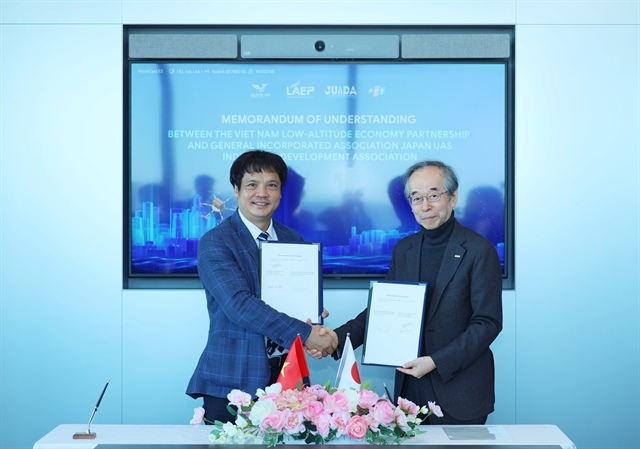Charting a course towards smarter ports
Charting a course towards smarter ports
Ports and shipping are vital for a well-functioning global economy. According to the International Chamber of Shipping, shipping contributes roughly 90 per cent of the world’s trading. Interestingly, four out of five of the world’s largest terminals are in Asia, as are its 10 largest container ports. Container shipping is growing to keep up with demands in consumer and industrial trade.

Denis Brunetti - President in Vietnam, Myanmar, Cambodia, and Laos, Ericsson
|
The increase in Vietnam’s container port volumes by 8.5 per cent in 2020 is well in line with that trend, and Vietnam has been focused on the opportunity that shipping presents to the economic strength of the country. The recent announcement of further investments within the next phase of port development by 2030 further strengthens and reinforces that strategic vision.
Ports face several challenges which must be overcome if they are to progress into a more connected world. Container shipping has to grow to keep up with demands in consumer and industrial trade as a result of increasing populations and economic development. This growth places greater pressure on ports to be more efficient and sustainable, as well as offer more competitive pricing to keep attracting major shipping lines.
According to a Navis survey in Ports Technology, two-thirds of port operators see reducing operating costs as their priority. Some of the challenges faced by the world’s ports today include limited yard space with increasing volume of shipping trade and growing size of vessels. Another challenge is the shortage of port pilots, leading to longer waiting times of as much as 36 hours, for boats at the dock to be unloaded and reloaded.
Last but not least, regulatory bodies are constantly stressing for the ports to reduce their greenhouse gas emissions, as seen in 2016’s Paris Agreement, and mandating that ports cut their emissions in half by 2030.
These challenges are pushing the port owners towards realising the underlying need for automation backed by robust connectivity. The many benefits of automation are becoming increasingly clear to port operators with respect to improving operations, efficiency, costs, monitoring, and safety.
All of these lead to higher productivity, safer operations, and the all-important stronger bottom lines. It is equally clear that legacy technologies like Wi-Fi, bluetooth, or physical cables are not the answer. There is a need for much stronger connectivity.
5G cellular technology is the key tool needed to create a smart port and lay the foundation for using the Internet of Things (IoT) in industrial automation. A smart port’s network infrastructure must be able to handle the large amounts of data that is generated by cranes, vehicles, equipment, and workers.
In a recent report called Connected Ports, Ericsson in partnership with global sensor technology leader ifm identified the five most beneficial use cases for smart port technologies: remote-controlled ship-to-shore cranes; automated rubber tired gantry (RTG) cranes; automated guided vehicles; condition monitoring; and drones for surveillance and deliveries. The five use cases work best and generate the most return on investment when powered by a 5G-ready private cellular network.
It is estimated that four out of the five use cases should pay for themselves in approximately two years, with automated RTG cranes needing fewer than three. When deployed together, complete payback can even be achieved in under two years. This should be highly reassuring for the port companies while in the pursuit of building the ports of the future. The merits do not end there; by the fifth year, the use cases contribute to an accumulated gross value of $406 million.
Beyond the financial benefits, smart ports create a substantial triple bottom line that includes increased productivity and efficiency, improved safety for workers, and a more responsible environmental impact. With 5G, cellular service providers are uniquely positioned to serve as security champions for digital business, providing the foundation for secure network services and critical infrastructure for today and for the future.
5G cellular technology is the key tool needed to create a smart port and lay the foundation for using IoT in industrial automation. 5G is well optimised for IoT, ensuring low energy usage, increased data security, and the ability to support high connection density.
In contrast to legacy networks, 5G provides a complete connectivity solution for licensed and unlicensed spectra, as well as seamless cellular vehicle-to-everything communication. 5G technologies at the Port of Livorno led to an estimated 8.2 per cent reduction in CO2 as a result of improved yard movements.
Through its strategic Industry 4.0 vision, Vietnam recognises the need to digitally transform enterprises across all industry sectors to achieve continued and sustained economic growth. In line with that vision, it is natural for ports to be digitised and readied for the future. Ports, being at the centre of global trade, are going to benefit immensely from automation across all functions, enabled by 5G.
With the right investments in 5G connectivity, Haiphong in the north and other ports across Vietnam may possibly emerge as the next shipping hubs with international port standards. Vietnam has implemented programmes to promote innovation and the application of technology in industries, whilst also promoting high-tech foreign direct investment.
All these factors will contribute to boosting Vietnam’s socioeconomic development, and 5G will be an important enabler and factor in achieving these strategic objectives and initiatives.

























